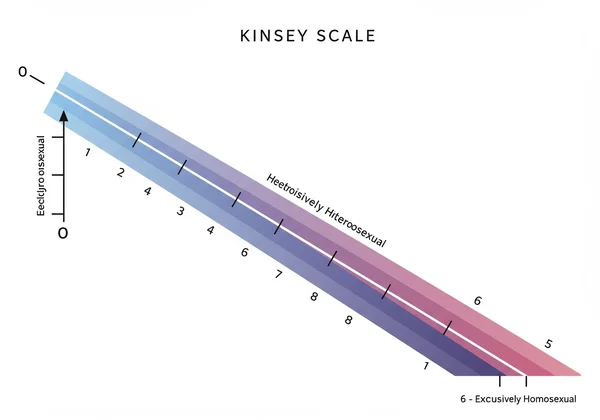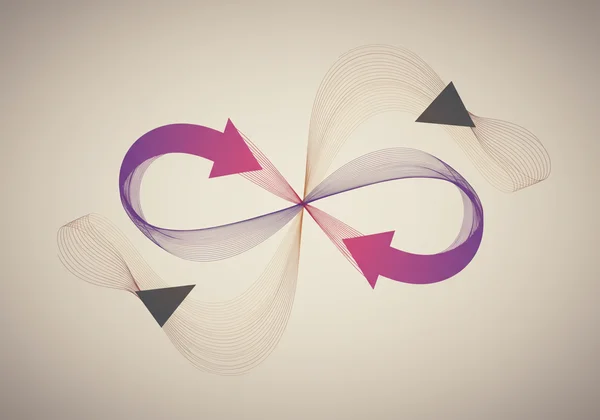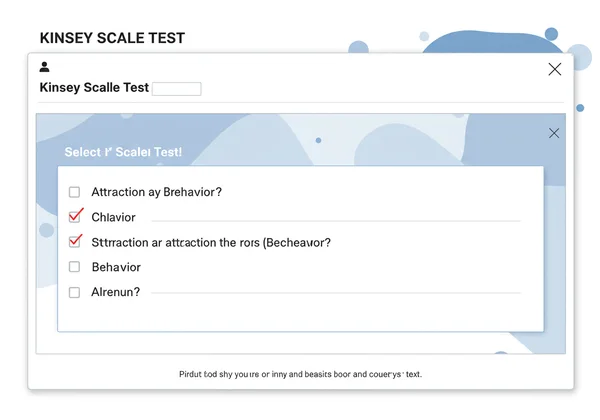Kinsey Scale Score Explained: Your Comprehensive Guide to Each Number (0-6)
Have you recently taken the Kinsey Scale test and received a score, but you're not entirely sure what it signifies? Or perhaps you're supporting a loved one on their journey of self-discovery and want to understand their experience better. What does your Kinsey Scale score mean? This comprehensive guide will thoroughly explain each point on the Kinsey Scale (0 through 6, plus X), outlining what each number means in terms of attraction, behavior, and fantasy. Remember, the Kinsey Scale is a spectrum, not a rigid label, designed to help you explore your unique sexual orientation. If you're ready to dive deeper into your own understanding, you can always start your exploration on our website.
Decoding Your Kinsey Scale Meaning: A Spectrum of Sexuality
The Kinsey Scale, developed by Dr. Alfred Kinsey and his colleagues in the 1940s, revolutionized the way we think about sexual orientation. Prior to their groundbreaking research, sexuality was largely viewed as a strict binary: either heterosexual or homosexual. Kinsey’s work introduced the radical idea of a spectrum of sexuality, acknowledging the vast diversity of human experiences.

The Kinsey Scale: Beyond Simple Labels and Categories
One of the most profound aspects of the Kinsey Scale is its rejection of rigid categories. Instead of forcing individuals into "either/or" boxes, it offers a continuum from exclusively heterosexual to exclusively homosexual. This approach recognizes that sexual attraction, behavior, and fantasy can be complex and may not always align perfectly, providing a more nuanced framework for self-understanding. It’s an invitation to explore, not a definitive declaration.
Kinsey 0: Exclusively Heterosexual Experiences and Attractions
A score of Kinsey 0 indicates that an individual is exclusively heterosexual. Their experiences, desires, and thoughts are exclusively focused on the opposite sex. For someone identifying as Kinsey 0, same-sex attractions or experiences are absent. This represents one end of the Kinsey continuum, illustrating a clear and consistent heterosexual orientation across all three dimensions.
Kinsey 1: Predominantly Heterosexual with Incidental Same-Sex Experience
Individuals scoring Kinsey 1 are predominantly heterosexual, but they have experienced incidental same-sex attractions or behaviors. While their primary orientation is opposite-sex, they may have had occasional minor attractions or engagements with individuals of the same sex. It highlights that sexual experiences can sometimes deviate slightly from a dominant pattern.
Kinsey 2: Mostly Heterosexual with More Than Incidental Same-Sex Experience
A Kinsey 2 score suggests a person is mostly heterosexual but has had more than incidental, though not equal, same-sex experiences or attractions. Same-sex experiences or fantasies are noticeably present, though opposite-sex attractions and behaviors still largely dominate. It represents a further step along the Kinsey Scale towards bisexual experiences, without reaching a balanced attraction. For those curious, you can take the test to see where you might fall on this unique scale.
What Does a Score of 3 on the Kinsey Scale Signify?
A Kinsey score of 3 is often considered the midpoint of the scale, signifying an approximately equal attraction to both sexes. Individuals in this category experience a notable degree of both heterosexual and homosexual attractions, behaviors, and fantasies. It indicates a genuine bisexuality or pansexuality, where attraction to neither sex predominates. This particular score resonates deeply with many who identify with a more balanced sexual orientation.

Kinsey 4: Predominantly Homosexual with More Than Incidental Opposite-Sex Experience
A Kinsey 4 indicates a predominant homosexual orientation with more than incidental opposite-sex experiences. Here, most attractions, behaviors, and fantasies are directed towards the same sex, but with a discernible presence of opposite-sex experiences. This position on the Kinsey continuum recognizes that even those primarily oriented towards one sex may have some degree of attraction to the other.
Kinsey 5: Mostly Homosexual with Incidental Opposite-Sex Experience
Individuals with a Kinsey 5 score are mostly homosexual, with only incidental opposite-sex experiences or attractions. Their sexual orientation is overwhelmingly towards the same sex; any opposite-sex encounters or fantasies are rare and not indicative of their overall pattern. This score is very close to the exclusively homosexual end of the scale.
Kinsey 6: Exclusively Homosexual Experiences and Attractions
A Kinsey 6 represents the other extreme of the scale: exclusively homosexual. Those with a score of 6 find all their attractions, actions, and imaginations consistently directed towards the same sex. This signifies a complete and consistent homosexual orientation, marking the furthest point from heterosexual experience on the Kinsey spectrum.
Understanding Kinsey X: No Socio-Sexual Contacts or Reactions
Beyond the 0-6 scale, Kinsey also recognized an "X" category. Kinsey X applies to individuals who report no socio-sexual contacts or reactions. This category is sometimes associated with asexuality, indicating a lack of sexual attraction to any gender. It's important to remember that the Kinsey Scale primarily focuses on sexual attraction and behavior, and the "X" category accounts for those who fall outside this typical framework.
Your Kinsey Score Explained: Insights Beyond the Number
Understanding your Kinsey score goes beyond simply knowing a number. It's about gaining a deeper insight into the multifaceted nature of your sexuality. The scale offers a valuable lens through which to view your experiences, helping you to contextualize your feelings and behaviors.
The Fluidity of Sexuality: Why Your Score Isn't a Fixed Label
One of the most important takeaways from the Kinsey Scale is the concept of fluidity. Your sexual orientation is not necessarily a static, lifelong label. It can evolve and change over time, influenced by various life experiences, personal growth, and self-discovery. Your Kinsey score represents a snapshot of where you are at a given moment, not a permanent diagnosis. This fluidity is empowering, allowing for continued exploration and self-acceptance. Remember, the journey of understanding is continuous, and you can always get your report for deeper insights.

How Kinsey Defined Attractions, Behaviors, and Fantasies
Kinsey's methodology for scoring relied on three key components: actual sexual behaviors, sexual attractions (who one is drawn to), and sexual fantasies. By evaluating an individual's history and current patterns across these three dimensions, Kinsey aimed to provide a comprehensive view of their position on the sexual continuum. This holistic approach recognized that what a person does, desires, and imagines all contribute to their overall sexual profile. This thoroughness is why the Kinsey Scale remains a significant tool for self-reflection.
Your Personal Kinsey Exploration Continues
The Kinsey Scale offers a powerful tool for self-discovery and understanding the vast diversity of human sexuality. It’s a reminder that identity is personal and unique, and that it’s perfectly normal for attractions and experiences to fall anywhere along a broad spectrum. Whether you're just starting to explore your identity or seeking to understand a loved one, the insights provided by the Kinsey Scale can be incredibly validating.
We invite you to continue your personal journey. To continue your personal journey, explore your identity with our free online Kinsey Scale test. You'll receive an immediate score and a basic interpretation. For even deeper self-reflection, consider our optional AI-generated personalized analysis report, designed to give you more comprehensive insights into your results. Embrace your unique path of self-understanding.

Frequently Asked Questions About Kinsey Scale Scores and Meaning
How exactly does the Kinsey Scale test work?
The Kinsey Scale test typically involves answering a series of questions about your sexual attractions, behaviors, and fantasies. These questions are designed to assess patterns over your lifetime, helping to determine where you fall on the 0-6 scale. Our interactive test provides immediate results upon completion.
Is a Kinsey score of 3 the same as being bisexual?
While a Kinsey score of 3 often aligns with the experience of bisexuality (equal attraction to both sexes), it's important to remember that the Kinsey Scale describes a spectrum of behavior and attraction, not a diagnostic label. Many people who identify as bisexual might score a 3, but the scale simply maps experiences, offering a framework for self-understanding rather than a strict identity definition.
Can my Kinsey Scale score change over my lifetime?
Yes, absolutely! The fluidity of sexuality is a widely recognized concept. Your attractions and behaviors can evolve throughout your life due to personal experiences, growth, or changes in self-awareness. A Kinsey score is a snapshot, not a permanent declaration, and it's normal for it to shift.
Is the Kinsey Scale still relevant in understanding modern sexuality?
Despite being developed decades ago, the Kinsey Scale remains highly relevant as a foundational tool for understanding sexual diversity. While newer models and more nuanced terms exist (like pansexuality or asexuality, which weren't explicit in Kinsey's original work), its core concept of a spectrum continues to be powerful in challenging binary thinking and encouraging a broader view of sexual orientation.
Where can I take a confidential Kinsey Scale test online?
You can take a confidential Kinsey Scale test right now by visiting our homepage to take the confidential Kinsey Scale test online. Our platform is designed to be user-friendly and prioritizes your privacy, providing a safe space for your exploration. We also offer optional AI-powered personalized reports for deeper insights, ensuring your journey of self-discovery is truly insightful and secure.